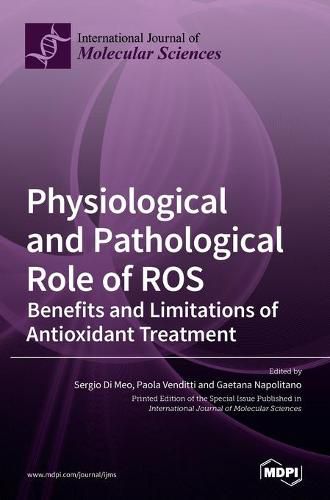Readings Newsletter
Become a Readings Member to make your shopping experience even easier.
Sign in or sign up for free!
You’re not far away from qualifying for FREE standard shipping within Australia
You’ve qualified for FREE standard shipping within Australia
The cart is loading…






This title is printed to order. This book may have been self-published. If so, we cannot guarantee the quality of the content. In the main most books will have gone through the editing process however some may not. We therefore suggest that you be aware of this before ordering this book. If in doubt check either the author or publisher’s details as we are unable to accept any returns unless they are faulty. Please contact us if you have any questions.
ROS were long considered one of the key players in tissue injury. Indeed, overproduction of ROS results in oxidative stress, a process leading to the development of many pathological conditions. For the treatment of these conditions, the use of antioxidants was proposed. Over time, it was shown that ROS at low concentrations act as signaling molecules, leading to the regulation of physiological functions. Moreover, several interventions that increase ROS generation activate stress-adaptive responses that extend the lifespan. It was also shown that excessive use of antioxidants can counter the beneficial effects of ROS. Currently, much progress has been made in understanding the role of ROS in human diseases and aging, as well as in the regulation of physiological functions, and in identifying the signaling pathways involved in ROS. However, much remains to be understood about the mutual interactions among signaling pathways underlying organisms’ adaptive responses, their modifications (which occur during aging), and some disease states. The aim of this Special Issue is to underline the effects of ROS production and antioxidant treatment in living organisms, focusing on their impact on health, disease, and aging.
$9.00 standard shipping within Australia
FREE standard shipping within Australia for orders over $100.00
Express & International shipping calculated at checkout
This title is printed to order. This book may have been self-published. If so, we cannot guarantee the quality of the content. In the main most books will have gone through the editing process however some may not. We therefore suggest that you be aware of this before ordering this book. If in doubt check either the author or publisher’s details as we are unable to accept any returns unless they are faulty. Please contact us if you have any questions.
ROS were long considered one of the key players in tissue injury. Indeed, overproduction of ROS results in oxidative stress, a process leading to the development of many pathological conditions. For the treatment of these conditions, the use of antioxidants was proposed. Over time, it was shown that ROS at low concentrations act as signaling molecules, leading to the regulation of physiological functions. Moreover, several interventions that increase ROS generation activate stress-adaptive responses that extend the lifespan. It was also shown that excessive use of antioxidants can counter the beneficial effects of ROS. Currently, much progress has been made in understanding the role of ROS in human diseases and aging, as well as in the regulation of physiological functions, and in identifying the signaling pathways involved in ROS. However, much remains to be understood about the mutual interactions among signaling pathways underlying organisms’ adaptive responses, their modifications (which occur during aging), and some disease states. The aim of this Special Issue is to underline the effects of ROS production and antioxidant treatment in living organisms, focusing on their impact on health, disease, and aging.